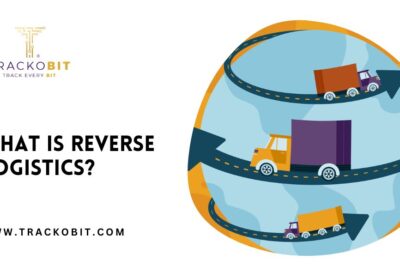What is Reverse Logistics?
The process of moving goods from the manufacturer to the end consumer is a well-known and highly structured operation. This is often referred to as the forward logistics or supply chain process. But what happens when products need to move in the opposite direction, from the consumer back to the manufacturer or another entity within the supply chain? This is where reverse logistics comes into play. In this article, we will explore the concept of what is reverse logistics? its significance in modern supply chain management, and how it can benefit businesses and the environment.
Understanding Reverse Logistics
1. Defining Reverse Logistics
Reverse logistics is a specialized process that deals with the movement of goods from their final destination back to the manufacturer or a designated location for various purposes, such as returns, recycling, refurbishing, or disposal.
Read Blog: Challenges of Operating the Supply Chain Industry
2. The Purpose of Reverse Logistics
Reverse logistics serves multiple purposes:
a. Returns and Exchanges
It facilitates the return of goods that are damaged, defective, or unwanted by the customer. This helps maintain customer satisfaction.
b. Recycling and Sustainability
It supports environmental sustainability by efficiently managing product recycling and disposal, reducing waste, and minimizing the ecological footprint.
c. Remanufacturing and Refurbishing
Goods returned through reverse logistics can often be remanufactured or refurbished, reducing waste and saving resources.
3. The Challenges
Reverse logistics presents unique challenges compared to traditional logistics, including managing returns, reducing transportation costs, and ensuring proper disposal.
Benefits of Reverse Logistics
4. Cost Savings
Implementing an efficient reverse logistics system can result in significant cost savings for businesses through the recovery of reusable products and reduced waste disposal expenses.
5. Customer Satisfaction
Handling returns and exchanges promptly and efficiently can lead to higher customer satisfaction and loyalty.
6. Environmental Responsibility
Reverse logistics allows companies to reduce their environmental impact by promoting recycling and responsible disposal.
7. Legal Compliance
Proper handling of returned goods is crucial for legal compliance, and reverse logistics helps businesses adhere to regulations.
Implementing an Effective Reverse Logistics System
8. Developing a Strategy
Businesses need to create a clear and comprehensive strategy for handling reverse logistics. This includes setting up return centers, establishing return policies, and training staff.
9. Tracking and Analytics
Utilizing advanced tracking and analytics tools can provide insights into returns and the performance of the reverse logistics process.
10. Communication
Effective communication with customers regarding return processes and policies is essential for a smooth reverse logistics operation.
Read Blog: How Lack of Visibility Can Hamper Your Logistics or Supply Chain Business
Future of Reverse Logistics
11. Technological Advancements
Advancements in technology, such as IoT and AI, are revolutionizing reverse logistics, making it more efficient and sustainable.
12. E-commerce and Reverse Logistics
The growth of e-commerce has further highlighted the importance of efficient reverse logistics in handling returns and exchanges.
Conclusion
Reverse logistics is an integral part of modern last-mile logistics, focusing on the movement of products from end consumers back to the manufacturer. It plays a vital role in managing returns, recycling, and refurbishing goods, ultimately benefiting both businesses and the environment. As the world of logistics continues to evolve, the significance of reverse logistics is only expected to grow. TrackoMile is more than capable of helping businesses ensure the smooth return of the products that will involve the scheduling and picking process. As last mile delivery software offering automated solutions that help cater to top customer expectations.
Frequently Asked Questions (FAQs)
1. Is reverse logistics the same as traditional logistics?
No, reverse logistics deals with the movement of products from the end consumer back to the manufacturer or designated locations for purposes such as returns, recycling, or refurbishing, while traditional logistics focuses on delivering products to consumers.
2. How does reverse logistics benefit the environment?
Reverse logistics promotes recycling and responsible disposal, reducing waste and minimizing the ecological footprint, which is beneficial for the environment.
